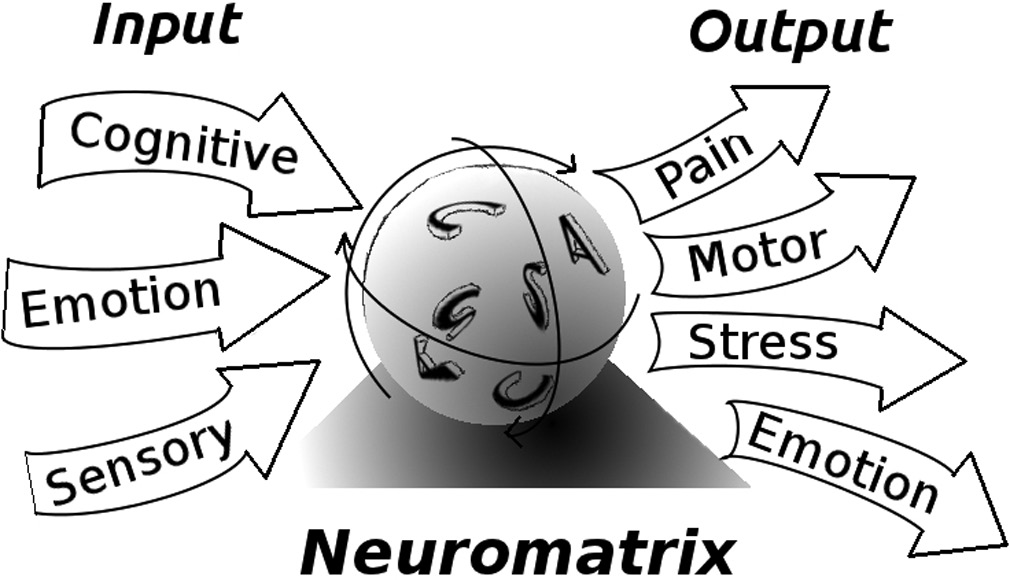Why am I still in Pain???
Are you still in pain even after taking medications and have gone the surgery route? Why does this happen to so many people?
Even though our understanding of pain and how the brain processes pain has improved drastically, certain treatments are still based on old, and outdated information or models. For example, the Cartesian pain model, and the belief that our brain is hardwired.
Usually therapists have an understanding of “pain fibers”. A person sprains his or her ankle, and the “pain fibers” send “pain messages” to the brain, then pain is perceived by the brain and the person will do something to help the ankle. But how does this explain the reason for pain when there is no injury? How does this explain phantom limb pain? Or explain how Kerri Strug in the 1996 Olympics was able to pull off a faultless vault performance? Her ankle injury was so severe her coach had to carry her to the platform. Truth is, it doesn’t explain, hence why the medical profession needs to update their information about pain.
The Old School Train of Thought: The Cartesian Model

The Cartesian Model could be the reason for the misunderstanding about pain and where it starts. This model comes from Renè Descartes. (1596-1650) Even though this model is extremely outdated, its theory of pain is the backbone of the way doctors approach pain issues today. This model basically says if you were to put your foot either in or near fire, that a message is sent to the brain via pathway or wire. When the message hit the brain it would result in a ringing of a bell producing pain. Not only is this idea extremely simple it’s incorrect. Therefore, if the teaching is overly simple and incorrect, the treatment will be as well.
(Little known fact: Descartes believed that nerves were hollow tubes and that spirits flowed up and down them).
When looking at the Cartesian model you’ll see that to treat a person in pain, several options show up.
1. Remove foot from the fire.
First, the person can take his foot out of the fire, but what about the persistent pain that exists afterward? This also doesn’t account for the instance of pain triggered by emotion. For example, fear of being burned while standing by the fire can cause pain or evoke the sympathetic nervous system. The sympathetic nervous system is our flight/fight/freeze mechanism.
2. Dousing the fire.
Second, you can douse the the fire with a bucket of water. Looking at the modern approach, “dousing the fire” would be pain medicine or injections. However, Medicare in the U.S. has had a 629% increase in expenditures for lower back pain over the last five years (Deyo, Mirza et al.,2009), yet pain rates are increasing, not decreasing. So logically, you can say “dousing the fire” doesn’t work.
3. Cutting the wire.
Third, and more severe approach to the Cartesian model of getting rid of pain would be to cut the wire. This would severe the message even getting to the brain, so if the brain can’t receive the message, pain will not exist. This modern approach would be surgery. If the Cartesian model was correct than surgery would be 100% successful. However, “20% of lumber discectomy patients have the same if not worse pain after surgery. (Ostelo, Costa et al., 2004); Lumbar fusions, in general, only have a 50% success rate in decreasing pain (Deyo, Nachemson et al.,2004; Deyo Gray et al., 2005).
More than 360 years after Renè Descartes death, this model continues to have influence on the way doctors and therapists think of pain.
Incorrect assumptions.
As a result of the outdated information, when you go to a therapist or doctor you might be introduced to some inaccurate assumptions. For example:
There is a direct link between the amount of tissue damage and the level of pain that you feel.
- All pain is caused by an injury and if there is a increase of pain it must mean more tissue damage.
- If you are dealing with chronic pain, under the Cartesian model, this means that the tissue isn’t healing and the damage is still going on.
- Pain is an input driven system.
- The nervous system is simply built for conduction (a wire).
- However pain is just way more complex.
Pain fundamentals.
As mentioned above, its been a belief that our brain plays a role when we experience pain. The idea was that there was a specific area in the brain, like a “pain center.” However, science today has proven that there is not a specific spot in the brain that deals with pain. In fact, their is many areas of the brain that are involved when we are in pain. So when looking for answers on how to treat your pain, understand that there are more than a few ways to fix it.
Pain is actually an action signal. The brain makes a decision based on its perception of threat. For example: someone hurts their ankle, and is crossing the street. They see a bus approaching them very fast. The person now runs across the street with no pain in their ankle. As soon as the person calms down their ankle pain comes back. Why did the pain go away? The brain perceived that the bus was a greater threat to your survival, so no pain was produced to protect the ankle, allowing the person to get out of harms way.
Pain is part of the survival system. This means that if your brain views something as a threat, it will create pain.
Pain is also individual. This means that two people can be hurt in the same way, and have two different pain experiences.
Pain is a multi-system output event. This means again, since survival is of upmost importance to the brain, pain will influence body-wide changes in order to help us handle the threat that has presented itself.
What all these fundamentals of pain boil down to is the most current view of pain. Science is now calling it the neuromatrix. The neuromatrix highlights the fact that its not one thing that causes pain, you need to take a persons background, emotional state, physical state, etc into consideration.

If you are someone who is still in pain after medication and surgery, I encourage you to look at your life, and see where there may be something your brain is viewing as threatening. This can come in ways of eating inflammatory foods or not enough food, poor sleep, lack of movement, and a stressful job.
